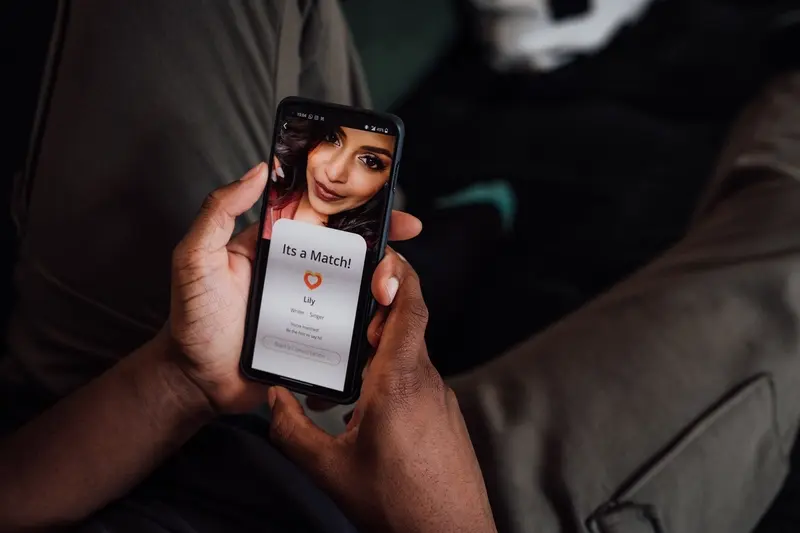How Do You Handle Content Moderation In Social Media Apps?
You've built your social media app, users are signing up, and everything seems to be going perfectly. Then it happens—someone posts something awful. Maybe it's hate speech, maybe it's misleading stories, or perhaps it's content that could harm other users. Suddenly you're faced with a massive problem that could destroy your platform's reputation overnight.
I've been working on social media apps for years, and this scenario plays out more often than you'd think. The truth is, content moderation isn't something you can leave until later—it needs to be baked into your platform from day one. Every successful social media app faces the same challenge: how do you keep users safe whilst still allowing free expression?
Content moderation is like being a digital bouncer, but instead of just watching the door, you're monitoring millions of conversations happening simultaneously
The stakes couldn't be higher. Poor platform management can lead to user exodus, legal troubles, and even getting banned from app stores. But get it right, and you'll create a thriving community where users feel safe to engage and share. This guide will walk you through everything you need to know about handling content moderation in your social media app—from automated tools to human oversight, community guidelines to user appeals.
What Is Content Moderation and Why Does It Matter
Content moderation is the practice of monitoring and reviewing what users post on your social media app—then deciding whether to keep it, remove it, or take some other action. Think of it like having a bouncer at a party, except instead of checking IDs, they're checking posts, comments, images, and videos to make sure everything follows the rules.
Now, you might wonder why this matters so much. Well, without proper moderation, social platforms can quickly turn into digital wild west scenarios where anything goes. We're talking hate speech, bullying, spam, fake news, and content that's just plain inappropriate. Users won't stick around if they feel unsafe or constantly bombarded with rubbish content.
The Business Case for Good Moderation
From a business perspective, content moderation isn't just about being nice—it's about survival. App stores like Google Play and Apple's App Store have strict guidelines about what kind of content they'll allow. If your app becomes a haven for harmful content, you risk getting booted entirely. That's game over for most social apps.
Good moderation also builds trust with your users; when people feel safe and respected on your platform, they're more likely to engage, share content, and recommend your app to friends. Bad moderation does the opposite—it drives people away faster than you can say "one-star review."
Types of Content That Need Moderation
Running a social media app means dealing with all sorts of content that users share—and trust me, some of it you really don't want on your platform! The obvious stuff includes hate speech, bullying, and anything that promotes violence. These are clear red flags that need removing straight away to keep your users safe.
Then there's the trickier content. Spam might seem harmless but it ruins the user experience; fake news can spread like wildfire and cause real harm; nudity and sexual content needs careful handling depending on your app's purpose and age rating. Don't forget about copyright violations either—users love sharing memes and videos they don't own, which can land you in legal trouble.
The Grey Areas
Some content isn't clearly right or wrong. Political discussions can get heated without breaking rules; comedy that's funny to some might be offensive to others; even religious content can spark debates. Each social media app needs to decide where to draw these lines based on their community and values.
Start by identifying the three types of content that would be most harmful to your specific user base—this helps you prioritise your moderation efforts where they matter most.
Self-harm content and misinformation about health are particularly sensitive areas that require immediate attention and often specialist review. Getting content moderation right means understanding that context matters just as much as the content itself.
Automated Moderation Tools and How They Work
Right, let's talk about the robots doing the heavy lifting—automated moderation tools are the backbone of content moderation in most social media apps today. These clever bits of software work around the clock, scanning through thousands of posts, comments, and images faster than any human team could manage.
The technology behind these tools is pretty impressive when you think about it. Machine learning algorithms analyse text for harmful language, hate speech, and spam whilst image recognition systems can spot inappropriate photos or videos in seconds. They're trained on massive datasets to recognise patterns that humans have flagged as problematic.
Key Features of Automated Moderation
- Text filtering for profanity, hate speech, and harassment
- Image and video scanning for adult content or violence
- Spam detection and fake account identification
- Real-time processing of user-generated content
- Automatic flagging or removal of policy violations
Now, here's the thing—these tools aren't perfect. They sometimes miss context or cultural nuances that humans would catch straight away. A joke between friends might get flagged as harassment, or legitimate educational content could be removed by mistake. That's why most successful social media apps use automated tools as the first line of defence, not the only one.
Human Moderators and Their Role
While automated systems can catch loads of inappropriate content, they're not perfect—and that's where human moderators come in. These are real people who review flagged posts, comments, and images to decide what stays and what goes. In my experience building social media apps, having human moderators is absolutely non-negotiable if you want to create a truly safe platform.
What Human Moderators Actually Do
Human moderators look at the tricky stuff that machines can't handle well. Sarcasm, cultural context, and subtle forms of bullying often fly right over automated systems' heads. A human can spot when someone's being mean even when they're using coded language or inside jokes that seem harmless to a computer.
The best content moderation happens when humans and machines work together, not when one tries to replace the other
The Challenges They Face
Being a content moderator isn't easy work. These people see some pretty awful stuff daily, which can take a real toll on their mental health. That's why good social media apps invest in proper training, regular breaks, and mental health support for their moderation teams. You can't just hire someone and expect them to handle disturbing content without proper support—it's not fair and it leads to poor decisions that affect user safety across your entire platform.
Building Community Guidelines That Actually Work
I've worked on dozens of social media apps over the years and let me tell you—community guidelines can make or break your platform. The best ones aren't written by lawyers in some boardroom; they're crafted by people who understand their users and speak their language.
Your guidelines need to be crystal clear about what's acceptable and what isn't. None of this vague "be respectful" nonsense that leaves everyone guessing. Users should know exactly where the line is drawn, and moderators should have no doubt about how to enforce the rules.
Key Elements Your Guidelines Must Include
- Specific examples of banned content (not just categories)
- Consequences for breaking rules (warnings, temporary bans, permanent removal)
- How users can report problems
- The appeals process if they disagree with moderation decisions
- Regular updates based on new types of problematic content
Here's what I've learnt from experience: your community will only be as good as the boundaries you set. Make them too strict and you'll stifle genuine conversation; make them too loose and troublemakers will run wild. The sweet spot is somewhere in between—clear enough to prevent chaos but flexible enough to allow authentic human interaction.
Testing and Refining Your Approach
Start with basic guidelines and refine them based on real user behaviour. What works for Instagram won't necessarily work for your fitness app or gaming platform. Your community is unique, and your guidelines should reflect that.
Handling Reports and Appeals From Users
When users report content on your social media app, you need a system that actually works—not just something that makes people think you care. I've seen apps fall apart because they ignored user reports or made the process so complicated that people gave up trying to help keep their platform safe.
Your reporting system should be simple and quick. Users need to find the report button easily and select from clear categories like harassment, spam, or inappropriate content. Don't make them write essays about why something bothers them; most people won't bother if it takes too long.
Building Your Appeals Process
When you remove content or suspend accounts, some users will disagree with your decision. That's normal—and that's why you need an appeals process. People make mistakes, automated systems get things wrong, and sometimes context matters more than it first appeared.
Set clear timeframes for your appeals process and stick to them. Users deserve to know when they'll hear back about their appeal.
What Your System Needs
Your user safety depends on having the right tools and processes in place for platform management:
- Quick response times for serious threats like harassment or self-harm
- Clear communication about what action you've taken
- Easy-to-use appeal forms that don't require legal degrees to understand
- Regular training for your moderation team on new types of harmful content
The key is being transparent without giving away your moderation secrets. Users trust platforms that communicate clearly about their decisions.
Creating a Safe Space While Protecting Free Speech
Balancing safety with free speech is probably one of the trickiest parts of running a social media app—and trust me, I've seen plenty of apps struggle with this over the years. You want people to feel comfortable expressing themselves, but you also need to protect users from harmful content. It's a delicate balancing act that requires careful thought and planning.
The key is being transparent about what you allow and what you don't. Your community guidelines should clearly explain the difference between content that's simply unpopular or controversial and content that's genuinely harmful. For example, someone sharing their political views might be controversial, but it's not the same as someone posting threats or harassment.
Finding the Right Balance
Here are some approaches that work well:
- Give users control over what they see with filtering and blocking tools
- Use warning labels for sensitive content rather than removing it entirely
- Create different spaces within your app for different types of discussions
- Focus your moderation on behaviour rather than opinions
- Be consistent—apply your rules fairly to everyone
Remember that context matters enormously. The same words might be acceptable in one situation but not in another. This is where stellar apps stand out from the crowd; they can understand nuance in ways that automated systems simply can't.
Conclusion
Building a successful social media app isn't just about creating great features—it's about creating a space where people actually want to spend their time. And that means getting content moderation right from day one. I've worked on plenty of apps where founders thought they could tackle moderation later, and trust me, it never ends well. Your users deserve better than that.
The key is finding that sweet spot between automated tools and human oversight. Machines are brilliant at catching obvious problems quickly, but they'll never understand context the way people do. Your community guidelines need to be clear enough that a teenager can understand them, yet flexible enough to handle the weird edge cases that will definitely pop up. Because they always do!
Remember, every report your users send is actually a gift—they're telling you where your system isn't working. Handle these reports fairly and transparently, and you'll build trust. Ignore them or handle them poorly, and you'll lose users faster than you can count. The most successful social media apps I've helped build all had one thing in common: they treated user safety as a core feature, not an afterthought. Your platform management strategy will make or break your app's reputation.
Share this
Subscribe To Our Learning Centre
You May Also Like
These Related Guides

What Are The Legal Requirements For Building Social Media Apps?

What Safety Features Should My Dating App Have To Protect Users?



